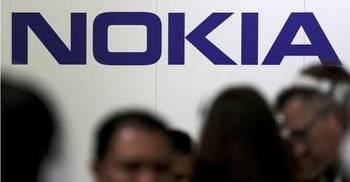Google claims Chrome 89 will put less strain on your system

Google has claimed that Chrome 89, which started rolling out on March 2, is more resource-efficient than its predecessors. The performance improvements should be visible across all platforms, even though Google didn't explicitly mention iOS in its post on the Chromium Blog.
What Exactly Are These Performance Improvements?
According to Google, Windows users can expect an improvement of "up to 22% in the browser process, 8% in the renderer, and 3% in the GPU." Safe to say, these numbers are quite impressive for a browser that is notorious for being a memory hog. These figures will directly translate into "improved browser responsiveness by up to 9%."
Smarter memory usage allows Chrome 89 to discard memory that isn't being used. Google states that this lets Chrome reclaim "up to 100 MiB per tab." Chrome manages to do this by freeing memory that is not actively being used by the foreground tab. This is possible due to Chrome using PartitionAlloc that was also used in earlier Chrome variants to fix its worst traits in Windows 10.
MacOS users can also expect a volley of performance improvements. This is primarily due to reduced "memory footprint in background tabs on macOS" and enhancements in "tab throttling". Something that has been around since Chrome M87. These improvements result in up to 8 percent memory savings for Mac users.
Furthermore, a 65 percent improvement on the Apple Energy Impact Score will ensure that Mac systems run cooler and quieter.
Android users haven't been left behind either as Chrome 89 will start up 13 percent faster on Android devices. This has been achieved by something which Google has dubbed as "Freeze-Dried Tabs."
What this means is that every time you close Chrome, it will save a lightweight version of your opened tabs. The next time you launch Chrome, it will instantly load the saved versions of these tabs, "while the actual tab loads in the background." Freeze-Dried Tabs "support scrolling, zooming, and tapping on links."
Google also released a video where you can see the difference Freeze-Dried Tabs make.
Other performance changes on Android include a "5% improvement in memory usage, 7.5% faster startup times, and up to 2% faster page loads."
Google has also "rebuilt Chrome as a 64-bit binary" for users on high-end Android devices (Android 10 or newer with 8+ GB of RAM). This build promises to load pages 8.5 percent faster and be 28 percent smoother in terms of "scrolling and input latency."
As stated earlier, there are no exact performance improvements listed for iOS devices. But it's safe to assume that given the leaps and bounds taken on other platforms, iOS users can also expect a much smoother Chrome experience.
Why Does Chrome Use So Much Memory?
To put it simply, because it improves the user's browsing experience.
Chrome runs each tab as a separate process. This is one of the better safety features in Chrome as it prevents one tab from interfering with the other. Each separate tab has its own sandbox. The trade off, as one would guess, is higher resource usage.
Chrome also keeps a fully rendered version of all open tabs. A feature that allows users to switch between tabs seamlessly, without having to load them again. All of this information is stored in your computer's memory.
These features act as a double-edged sword because they make Chrome even slower on low-end systems while the absence of them would make Chrome feel like an archaic browser on mid to high-end systems.
Is This the Best Version of Chrome Yet?
Looking at the numbers claimed by Google, it does look like Chrome 89 is a huge step forward. But such claims have been made for previous versions of Chrome as well.
Still, performance improvements are always welcome and it will be exciting to see how these figures improve real-life usage.
Source: MUO, a Quebec based online technology publication.







